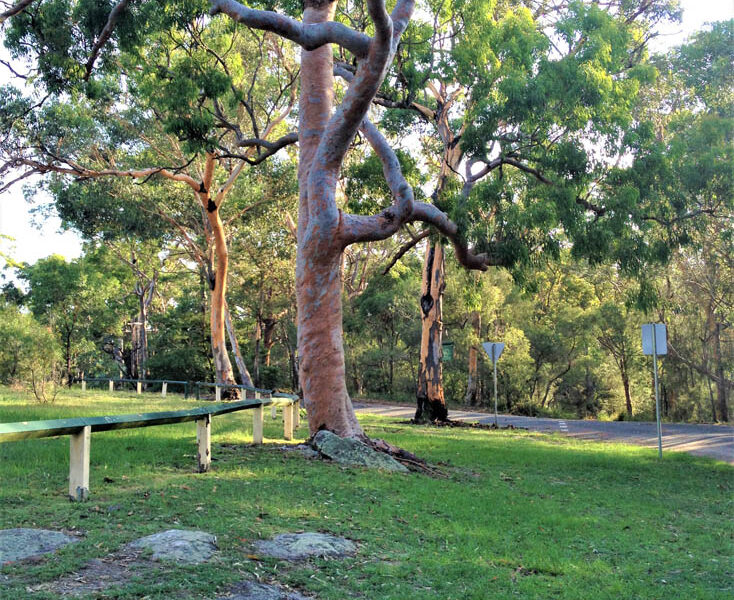An Introduction to a Career in Arboriculture
By Daniel Fuller
It would be fair to say, as people working in the ‘green’ industry, that everybody reading this article loves trees. However, some people love trees so much they’re willing to sacrifice working with all other types of plants so they can focus on planting, establishing, climbing, maintaining, and occasionally removing, trees of all shapes, size, and ages. If that resonates with you, keep reading this article as I explain how to become an arborist in Australia.
Generally, an arboriculture career begins on the ground as a ‘tree worker.’ That’s the person assisting the arborist from the ground and whose tasks may include keeping the area safe while the arborist is in the tree, putting fallen tree limbs through the chipper, attaching equipment to the arborist’s rope to hoist it up the tree for use, using rigging ropes and equipment to safely lower heavy branches and timber, as well as cleaning the area to make everything look neat and tidy at the end of a successful project. Over time, you’ll gain the formal qualifications and work experience to call yourself an arborist.
What do you need to do before you can call yourself an arborist? Certainly not just anybody with a chainsaw. The Australian Qualification Framework (AQF) qualifies professionals to work in the field. Anybody with a Certificate III (AQF3 level) in arboriculture is a qualified arborist. However, some arborists refer to somebody with this qualification as an ‘arboricultural technician’, ‘tradesperson,’ or sometimes a ‘tree surgeon.’
A professional with a Diploma has reached AQF5 and sets themselves apart as tree experts. They’re equipped to manage intricate and demanding tree-related jobs. AQF guidelines stipulate that only licensed professionals with specific qualifications can perform certain tasks, such as tree-climbing. AQF5 level arborists possess in-depth knowledge about tree structure and are highly skilled professionals in their field.
You can gain these qualifications through certain Registered Training Organisations (RTOs) that offer the corresponding courses, which could be your local TAFE or university.
Arboricultural certification training now has four different pathways: Works Coordinator Arborist; Environmental Arborist; EWP Arborist; Climbing Arborist.
While climbing techniques have advanced in the last few decades to make the work much easier, it’s still a physically demanding job that takes a toll on your body. It’s a good idea to keep this in mind when planning your career so you don’t burn out. I interviewed (via podcast) Alexandria Julius from a leading North American tree care company, who likened the physical demands and skill to being an ‘industrial athlete.’ Alexandria’s role in her company involves employee development and safety training, and experience in both professional and competitive climbing. Maintaining fitness is an obvious necessity in this role. With modern day equipment, people can work in this industry a lot longer into retirement age. Elevated Work Platforms (EWPs) are popular as they provide an alternative to climbing the tree, so this may be an option for people who would like to become an arborist but don’t want to climb. Alexandria also recommends contacting or joining local arborist associations such as the National Arborist Association of Australia and Arboriculture Australia so they can advise you.
Consulting in arboriculture is less physically demanding than climbing, which makes it a desirable career path for professionals as they age. However, it’s also an option if you’d prefer to pursue it earlier in your career. Instead of performing work in the trees, you’ll assess them, and provide expert advice and recommendations for your clients regarding their care. A climbing arborist, often working for another company, will then fulfill prescribed works.
Shifting from horticulture into arboricultural work is a natural progression since arboriculture is a horticultural niche. Much of the same knowledge applies with regards to basic plant biology, pests and diseases, and cultural conditions. Arborists have specialist knowledge that we don’t learn in horticulture, including wind dynamics, branch structure, and special pruning techniques.
In order to transition into arboriculture, you’d need to gain a new qualification. Don’t worry though, your horticulture qualification will still come in handy in your new job; you’ll be the person who also knows about the turf, annuals, and herbaceous plants in the arboriculture company.
When speaking with Consulting Arborist, Gary Moran from South Australia about the transition from horticulture to arboriculture, Gary explained that someone with horticulture and arboriculture qualifications is very well positioned to become a country council manager of open space, in which case they would need to have extensive experience with diverse types of plants and trees. Gary has sound advice for anybody starting a career in arboriculture so if you would like to know more about this topic, feel free to contact me and I can direct you to the podcast interviews I have done that cover careers in arboriculture.
We’re in a staff shortage crisis across most sectors of the industry, and arboriculture is no different. Whether you’re just starting your career, or you’re already well-established in the field, arboriculture is an exciting field to get into. There aren’t many other jobs that will pay you to climb trees all day!
Daniel Fuller
Owner/Host: Plants Grow Here Podcast & Hort People, the industry job board
M: 042 6169 708
E: hello@plantsgrowhere.com
W: plantsgrowhere.com W: hortpeople.com
Main photo: Angophora costata – managing trees in public spaces requires specialist qualifications in arboriculture (Image: Karen Smith)

